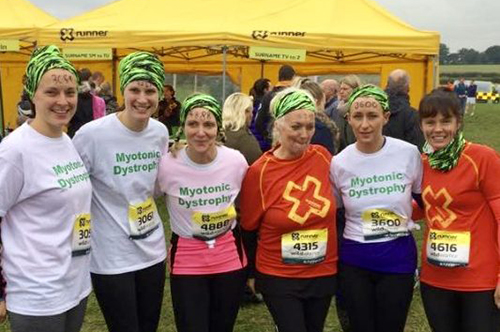
Get involved
We welcome new members and new ideas
Read MoreWeakness is very variable and may range from mild to severe. It particularly involves the face and eyelids, jaw, neck, forearms and hands, lower legs and feet. It can affect speech and result in a lack of facial expression.
Myotonia is difficulty in relaxing a muscle after it has been contracted, for example it may be difficult to let go after gripping something. Myotonia tends to affect grip more than other muscles, but can affect the tongue.
An abnormal rhythm or slow conduction of the electrical impulse through the heart is very common in DM1 and may require treatment. This can sometimes affect those who otherwise are without any symptoms. Regular ECGs (heart tracings) are advised to detect problems at an early stage.
Eating, drinking, and swallowing problems are common in Myotonic Dystrophy. These difficulties are thought to be caused by muscle weakness in the mouth and throat, but this is not confirmed. Difficulties can arise with chewing and clearing food from the mouth or throat. This causes issues with choking, and food and drink going down the wrong way towards the lungs. The SwallowDM1 project is exploring ways in which swallowing is affected in Myotonic Dystrophy.
Problems further into the digestive tract are also common. Problems may lead to pains in the bowels with constipation or diarrhoea, soiling of underwear particularly when stressed or excited and occasionally enlargement of the large bowel. Gallstones which can cause painful spasms after eating fatty food can be a problem in Myotonic Dystrophy and great care needs to be taken with any operation.
Chest infections may result from weakness of breathing muscles or from food entering the lungs as a result of poor swallowing. Inadequate breathing during the night may lead to disturbed sleep, difficulty waking, morning headaches, loss of appetite and daytime sleepiness. Regular breathing tests, and sometimes overnight oxygen saturation tests, are advised to detect problems early. Inadequate breathing during the night can be helped by a simple nightime machine called a NIPPY,with dramatic improvement in symptoms.
These are very common and can occur at any time of the day. Usually they are part of the condition and may be present at an early stage. If they become a lot worse without an obvious reason that may be due to breathing problems (see above) and should then be investigated.
Cataracts can cause blurring and dimming of vision, especially with bright lights at night. This may be the only problem caused by Myotonic Dystrophy especially in the first affected generation of a family. Droopy eyelids (ptosis) can cause a problem with reading and watching television. Affected individuals should have regular check ups at the optician and see a medical eye specialist if there is any concern.
Further information on eye problems Click here.
Myotonic Dystrophy can cause problems with delayed recovery after an operation or a reaction when certain anaesthetic drugs are used. It is Very Important to make sure that the surgeon and anaesthetist are aware of the condition before an operation. They may wish to contact a specialist centre for advice. A medical alert card or care card(supplied free of charge by the Support Group) should be carried at all times in your wallet or purse in case of an accident or emergency. Most patients with DM do not have problems after an operation. There is no problem with local anaesthetics. We would also recommend wearing a medical-alert bracelet.
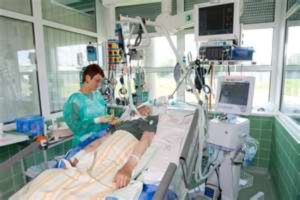
The brain may be affected. In children with congenital myotonic dystrophy this can cause learning difficulties and behavioural problems. In older children and adults it can cause problems with paying attention to things, planning and self motivation.
The muscles that control speech are affected, leading to slurring of speech. This can mean that speech is indistinct and difficult for others to understand. It can be helped by talking more slowly. In children with congenital or childhood onset myotonic dystrophy the weakness of speech and facial muscles can cause problems with growth of jaw and facial bones leading to difficulty closing the jaw properly, dental problems, and an increased risk of ear infections.
This poses a number of issues. Firstly pregnancy itself puts a lot of strain on the mother’s body so many of the symptoms in an otherwise mildly affected mum seem a lot worse. There is an increased chance of complications compared to unaffected mothers, and the risks associated with anaesthetics are even greater in pregnancy. If the baby is affected other complications may also affect the mother. There is up to a 50% chance of having an affected baby. For all these reasons it is therefore important to be delivered in a large hospital with specialist maternity and neonatal services that can deal with complications that might affect the mother or the baby.

Male infertility; diabetes (ask to have your blood or urine sugar checked regularly); a certain skin lesion called a calcifying epithelioma or pilomatrixoma may occur and in some people the bladder muscle may be affected.
DM is an inherited condition. Almost always one parent will have carried an “altered” DMPK gene i.e., carrying the expansion explained in the section “The Science : What causes myotonic dystrophy?”. This can be passed on to children, but on average only one in two will inherit the gene alteration. If the gene alteration is passed on to the next generation it may be more severe and the age at onset decreases. This pattern is called anticipation and means that in one family the grandparent may have cataracts as the only symptom, the parent may have the adult onset form of the disease and the grandchild could be severely affected with congenital myotonic dystrophy. But in each generation there is always a 50% chance of NOT inheriting the DM gene alteration.
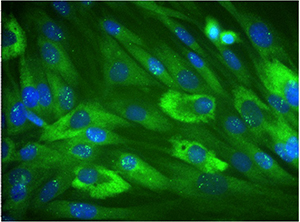
Accurate genetic tests are possible for healthy individuals who would like to know if they have inherited myotonic dystrophy, because it is in their family. Genetic counselling is advised if genetic testing is being considered.
Not all people with myotonic dystrophy need to be followed by a specialist clinic but all need full information about the condition and its consequences, including genetic aspects, and should have a clear plan for when medical help is needed. Specialist advice should always be sought in relation to surgery and anaesthesia, pregnancy or serious illness. A wide range of disability aids exist. It is important that these are chosen with expert assistance.
At present there is no cure for myotonic dystrophy but this may change as a result of rapid progress in our understanding of how the disorder is caused – meanwhile all people with myotonic dystrophy can help themselves by knowing about their condition, recognising and avoiding hazards, and by informing doctors and other professionals. They should also consider registering with the UK Myotonic Dystrophy Patient Registry. You can download an explanatory leaflet here.
Information supplied by: Dr Mark Rogers MD FRCP, Consultant Clinical Geneticist, Cardiff
Dr Margaret Phillips MD FRCP Associate Professor in Rehabilitation Medicine, University of Nottingham.

We welcome new members and new ideas
Read More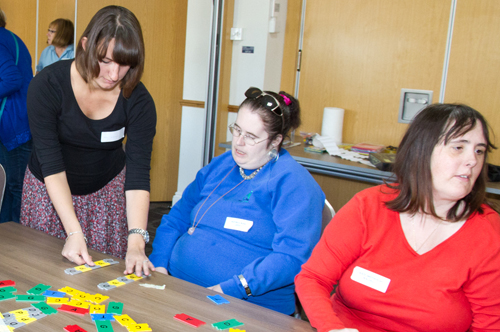
Myotonic Dystrophy is a condition affecting 1 in 8000 adults
Read More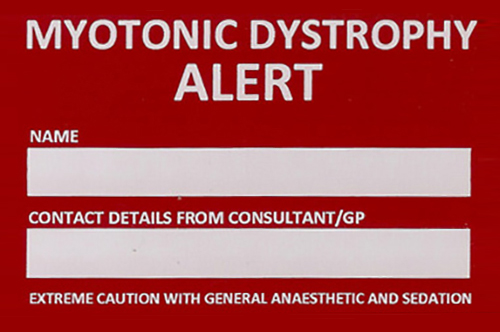
Offering friendship and support to all those affected
Read More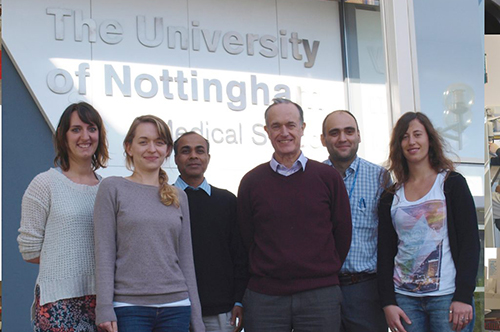
Keep up to date with research in this field
Read More